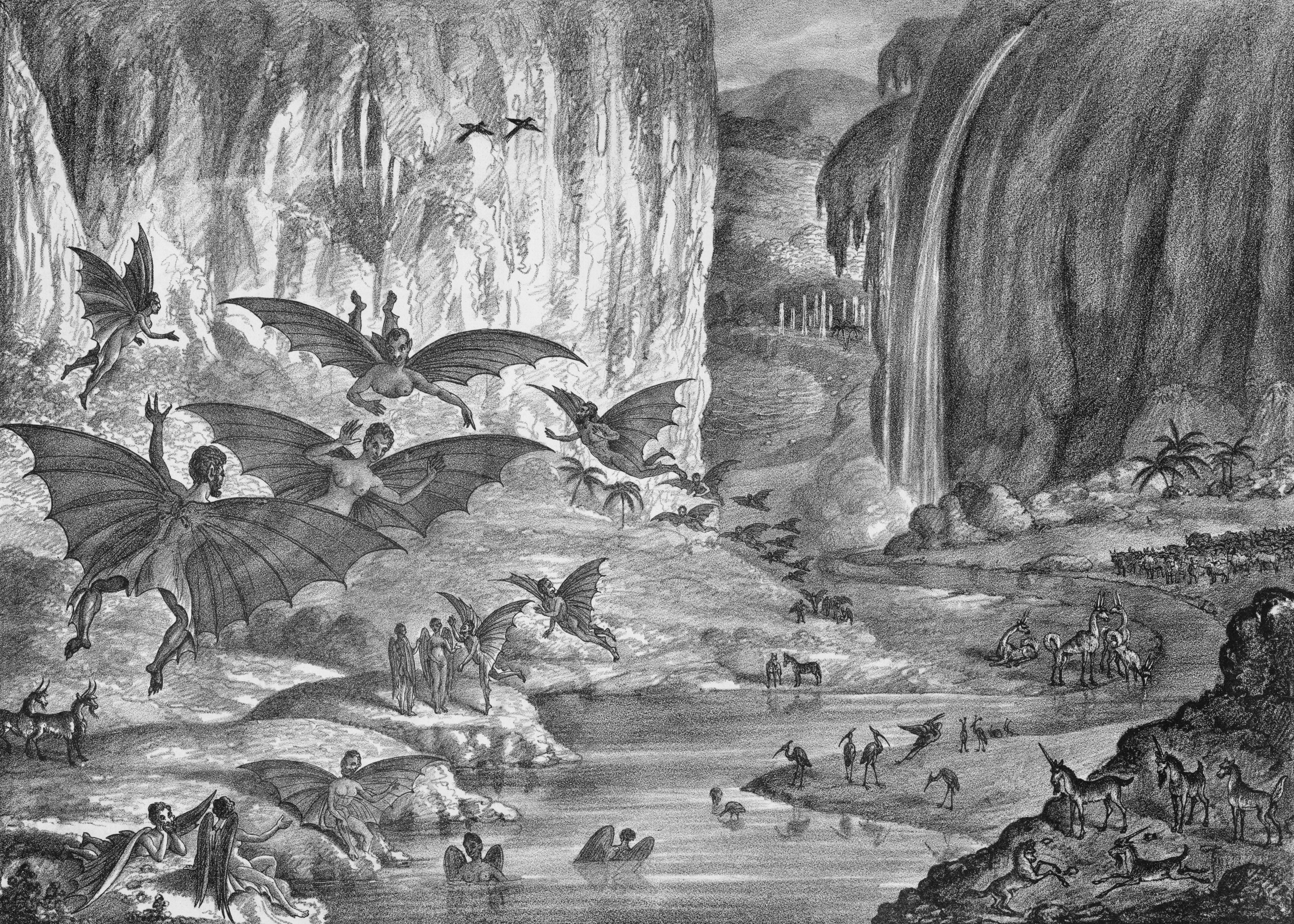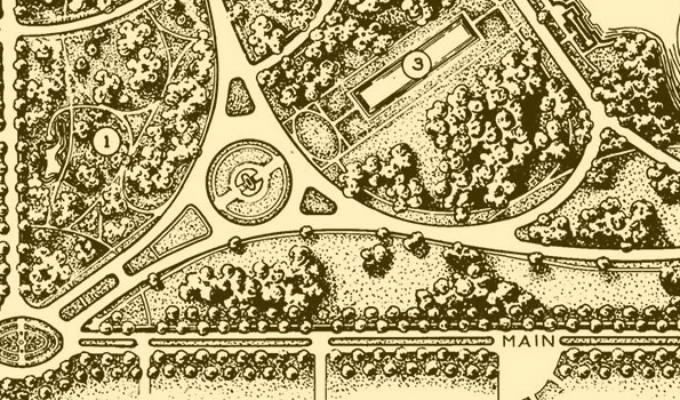Most of us are familiar with the crazy moon landing conspiracy theories that were sparked soon after Apollo 11 returned to Earth, but hardly anybody knows about the real moon hoax that occurred more than a hundred years before America’s Space Program was even conceived.
On August 25, 1835 The Sun, a penny-press newspaper based in New York City, published the first in a series of six articles titled:
Great Astronomical Discoveries Lately Made By Sir John Herschel. L.L.D., F.R.S.&c. At The Cape of Good Hope.
The article was purported to be reprinted from the Edinburgh Journal of Science (which had actually ceased publication several months before, but never mind) and claimed that the eminent astronomer had used a giant telescope with a 24 ft. diameter lens to spot volcanoes, oceans, animals and even humanoids living on the moon’s surface.
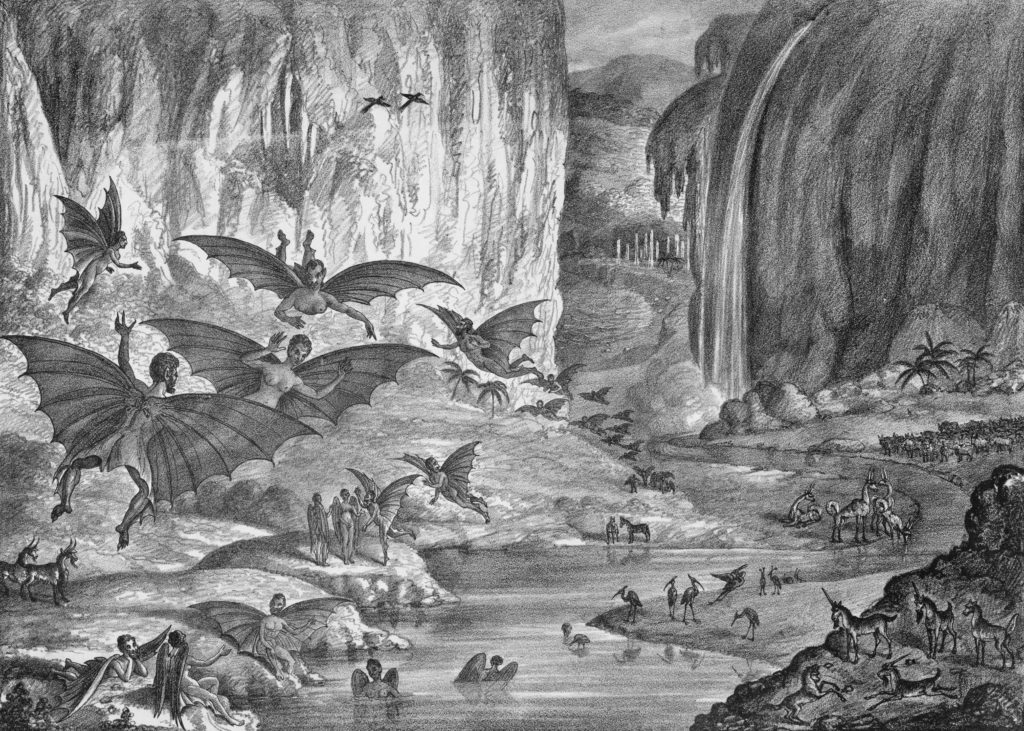
The article began with an exciting foreword:
“To render our enthusiasm intelligible, we will state at once, that by means of a telescope of vast dimensions and an entirely new principle, the younger Herschel, at his observatory in the Southern Hemisphere, has already made the most extraordinary discoveries in every planet of our solar system; has discovered planets in other solar systems; has obtained a distinct view of objects in the moon, fully equal to that which the naked eye commands of terrestrial objects at the distance of a hundred yards; has affirmatively settled the question whether this satellite be inhabited, and by what order of things; has firmly established a new theory of cometary phenomena; and has solved or corrected nearly every leading problem of mathematical astronomy.”
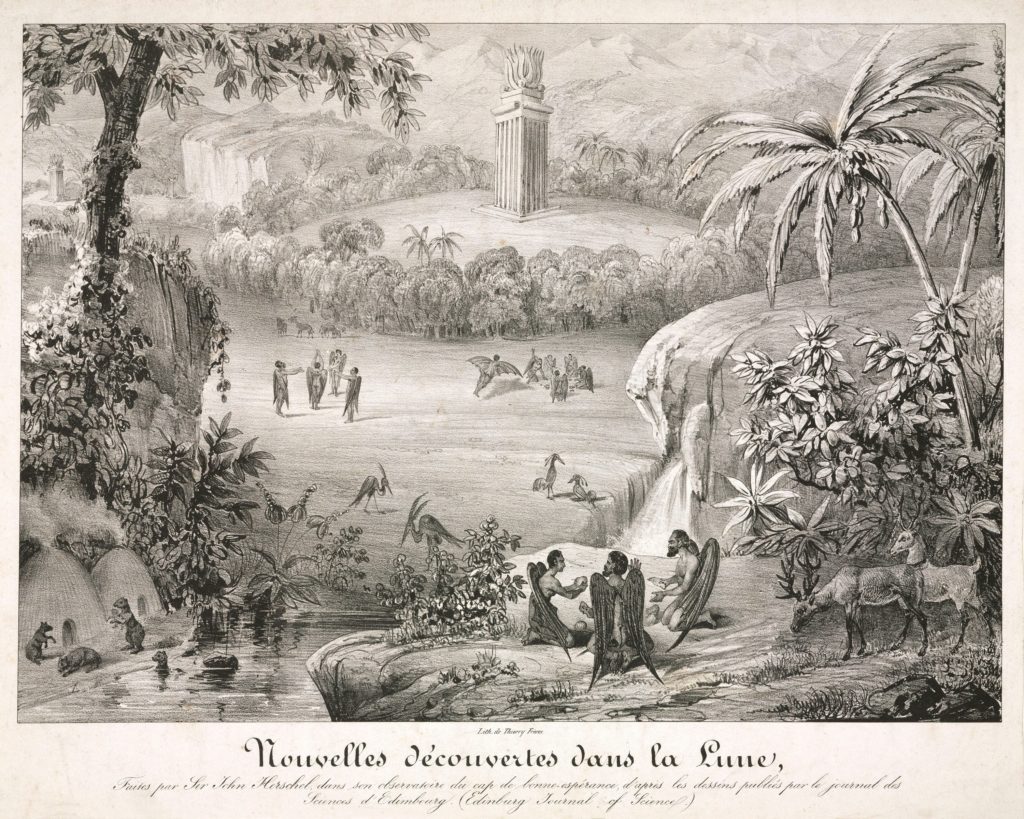
Portrait of a man-bat (“Vespertilio-homo“), from an edition of the Moon series published in Naples. Source: Wikimedia Commons.
The younger Herschel in question was Sir John Herschel, son of Sir William Herschel. Both father and son were accomplished astronomers. In 1789 William had famously constructed the largest telescope ever built (at the time). The behemoth was forty feet long and four feet in diameter. Through it, Herschel claimed he could see ample evidence of life on the moon.
The writer of the Moon Hoax articles cleverly added a fictional second chapter to this true story, which was well known at the time. The articles tell the story of secret plans for an even grander telescope that the elder Herschel had Drawn up shortly before his death. They go on to say that the plans were discovered by his son, who labored to bring his father’s contraption to life. He then transported the creation to South Africa to complete his father’s life’s work of mapping the sky.
The articles were claimed to be written by Dr. Andrew Grant, who was purported to be a colleague of John Herschel. In reality, they were written by a reporter named Richard Adams Locke. Whether or not Locke intended his story to be taken seriously is unclear. In a later interview, published after the hoax was revealed, he said he intended the articles to be a satire and that he never expected people to actually believe what he wrote. More than likely, he was just trying to drum up business for his paper and didn’t care if people believed the story of not.
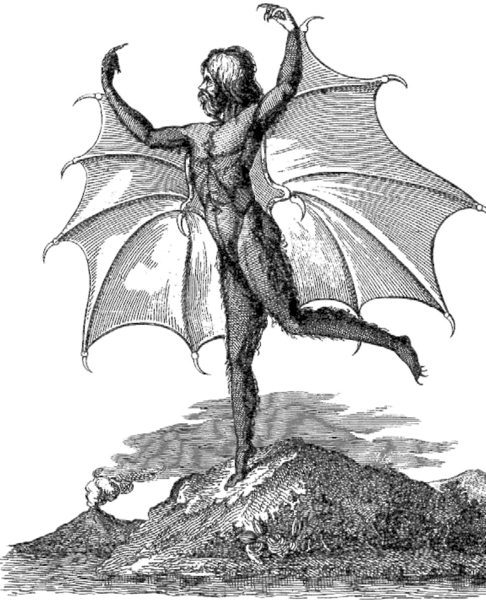
Portrait of a man-bat (Vespertilio-homo), from an edition of the moon series published in Naples. (Courtesy of the New York Public Library.) Source: Wikimedia Commons.
Regardless of Locke’s intentions, the story took America by storm. Everyone wanted to hear of the strange new world that had been uncovered. Locke didn’t disappoint. In the guise of trustworthy Dr. Grant, he described giant bipedal beavers, moon-buffalo and humanoids whose bodies were covered in copper-colored hair and who possessed giant, bat-like wings.
New details were published daily for six days. During this period The Sun’s readership skyrocketed. The Sun had been founded only two years before by businessman Benjamin Day. Day had got into the newspaper game as a way of salvaging his business, much of which had been lost during a nation-wide financial panic earlier that year.
Day sold his newspaper for a penny, much cheaper than the six cents most other morning newspapers charged at the time. He intended his cheap publication to appeal to working class individuals, many of whom could not spare the money for more expensive publications.
In an effort to attract readers, he published stories of crime and murder, subjects most newspapers shied away from at that time. He also didn’t seem to be very concerned about fact-checking his articles. The Sun proved to be hugely influential, sparking a wildfire of cheap publications that would come to be known collectively as the Penny Press.
If you think fake news is a new phenomenon, you obviously haven’t heard the absolutely ridiculous claims made in the Moon Hoax articles. You can read a transcription of them on the Museum of Hoaxes page; it’s well worth checking out.


